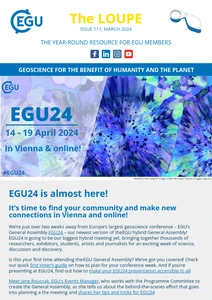President: Holly J. Stein
(gmpv@egu.eu)
Deputy President: Marian Holness
(marian@esc.cam.ac.uk)
The disciplines Geochemistry, Mineralogy, Petrology, and Volcanology (GMPV) are the nexus of Earth processes. The GMPV Division addresses the chemical and physical properties of minerals that build our planet and their impacts on humanity and Earth’s habitability. The topics that fall under the GMPV purview include volcanic unrest and eruption; formation and evolution of continental crust; the role of atmospheric composition in habitability, via the geochemical record linked to mass extinctions; and the chemistry of the deep Earth, from mantle to core, including isotope geochemistry and radiometric dating. The science covered by GMPV also includes ocean chemistry and its control by ocean floor magmatism, weathering and erosion of continental crust, or cosmic input. The GMPV scope includes the traceability of fluid migration within the Earth through the study of ore deposits, geothermal systems as well as modifications of deep-seated rocks. In sum, the disciplines encompassed by the GMPV Division collectively describe the workings of complex and inter-connected systems in the Earth, providing the opportunity to speculate about other potentially habitable planets.
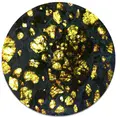
The GMPV division collaborates with the VGP division of the American Geophysical Union, and with professional societies like the European Association of Geochemistry and the European Mineralogical Union.
Are you looking for a job within the GMPV see the Job listing sub page here.
Recent awardees

- 2024
- Robert Wilhelm Bunsen Medal
The 2024 Robert Wilhelm Bunsen Medal is awarded to
Kei Hirose for outstanding research, combining innovative experimental and analytical techniques, on the behaviour and evolution of the Earth’s deep interior.
Read more

- 2024
- Arne Richter Award for Outstanding Early Career Scientists
The 2024 Arne Richter Award for Outstanding Early Career Scientists is awarded to
Yanhao Lin for groundbreaking research on lunar magma ocean crystallisation, and experimental and theoretical work to quantify water contents and volatile cycling from deep mantle to near surface.
Read more

- 2023
- Robert Wilhelm Bunsen Medal
The 2023 Robert Wilhelm Bunsen Medal is awarded to
Susan L. S. Stipp in recognition of her fundamental research and unique applications of nano-geochemistry and mineralogy.
Read more

- 2023
- Division Outstanding Early Career Scientist Award
The 2023 Division Outstanding Early Career Scientist Award is awarded to
Xin Zhong for outstanding research in the field of elastic thermobarometry, resulting in many novel applications including the characterization of frictional melts formed during faulting, metamorphism in the deep crust, and the timing of kimberlite ascent.
Read more

- 2023
- Outstanding Student and PhD candidate Presentation (OSPP) Award
The 2023 Outstanding Student and PhD candidate Presentation (OSPP) Award is awarded to
Alessia Tagliaferri Garnet compositional re-adjustment: cooling rate constraint in metapelites from the Lepontine dome (Central European Alps)
Read more
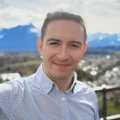
- 2023
- Outstanding Student and PhD candidate Presentation (OSPP) Award
The 2023 Outstanding Student and PhD candidate Presentation (OSPP) Award is awarded to
Bartosz Puzio Estimation of missing third-law standard entropy of apatites using the optimized Volume-based Thermodynamics
Read more
Latests posts on the GMPV blog
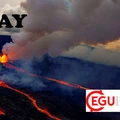
EGU24 Friday Highlights
Tired after the week-long conference? The GMPV division is ready with a number of interesting sessions to refresh your moods. Let’s enjoy the last moment of the EGU General Assembly 2024. Let’s start the day with a cup of tea and join the conference with the energy of a volcano because a session is waiting for all of you on hydrothermal alteration in volcanic settings (GMPV8.2). The session will deal with the characterization, imaging, monitoring, and hazard/economic assessment of volcanic …
Read more
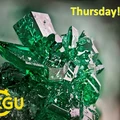
EGU24 Thursday Highlights
Welcome to Thursday, the second last day of EGU – GA 2024! We have a lot of interesting sessions filled with highlighted talks, orals, posters and the prestigious medal awards lectures for the GMPV division. We have many brainstorming talks today and here I’m listing a few that might appeal to you following the EGU time blocks and breaks. Just as last year, the GA is in hybrid mode so experience all these events on the virtual Gather.town platform and …
Read more
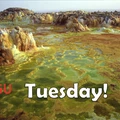
EGU24 Tuesday Highlights
Welcome to day 2 of our EGU General Assembly. GMPV researchers, buckle up to a great day, with many interesting sessions on magmatic processes, volcanic degassing, magma storage and integrated approaches to understand igneous systems. You also have a joint session in honour of W. Jason Morgan. There are so many things taking place today, make sure you know what is on today’s schedule! What is there for today? Meet the GMPV Division President Holly Stein, the ECS GMPV Rep …
Read more

EGU24 Monday Highlights
And finally, EGU24 is officially starting!! We waited one year, and now we can meet again our colleagues from all around the world, ready to talk about Science! Be ready to start the GA at 8.30 with one of the Short Courses organized by part of our ECS Team, on How to establish and grow your scientific network. Tips and tricks on how to establish, grow and maintain your scientific network will be shared, and you will hear from panelists …
Read more
Current issue of the EGU newsletter












